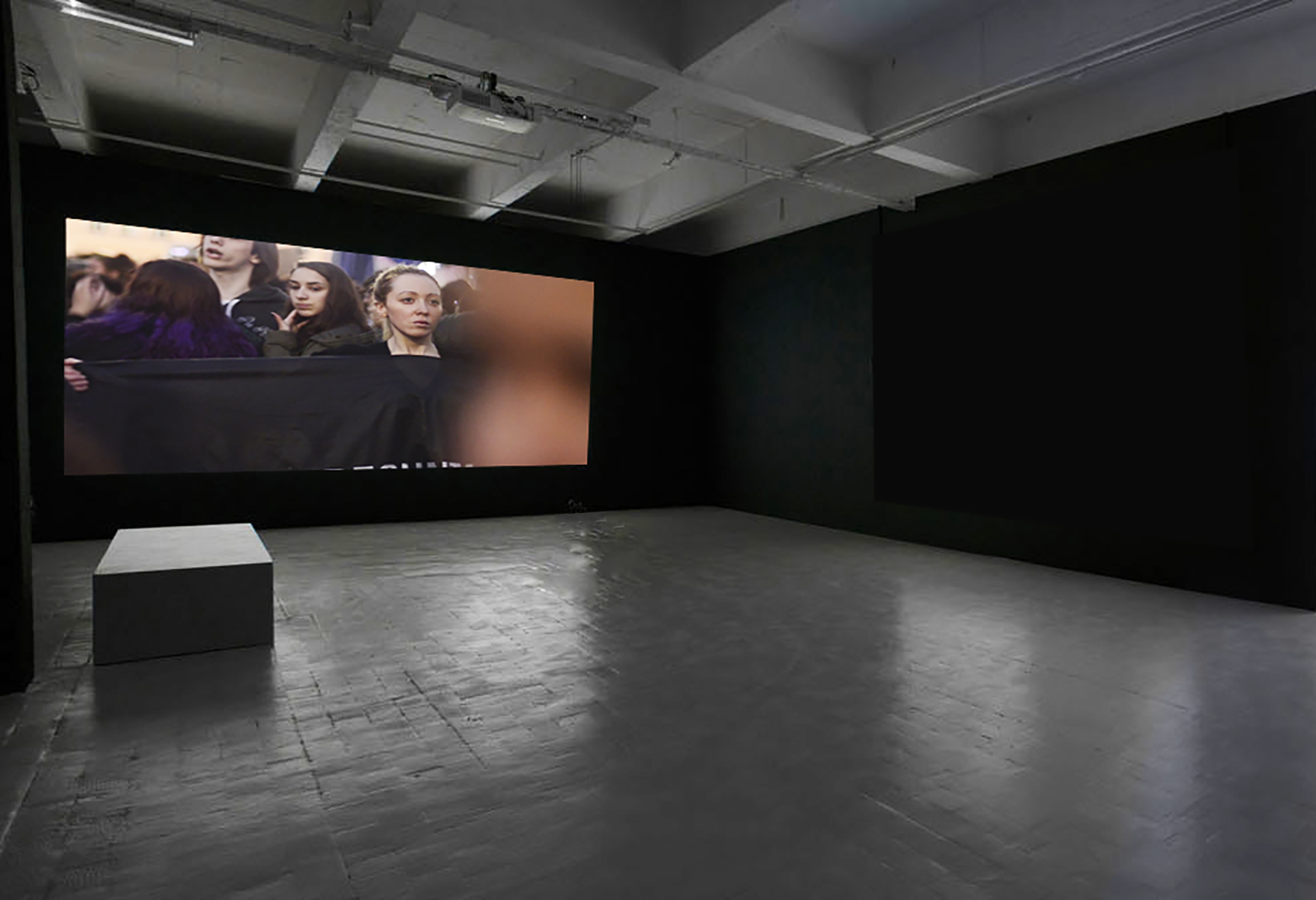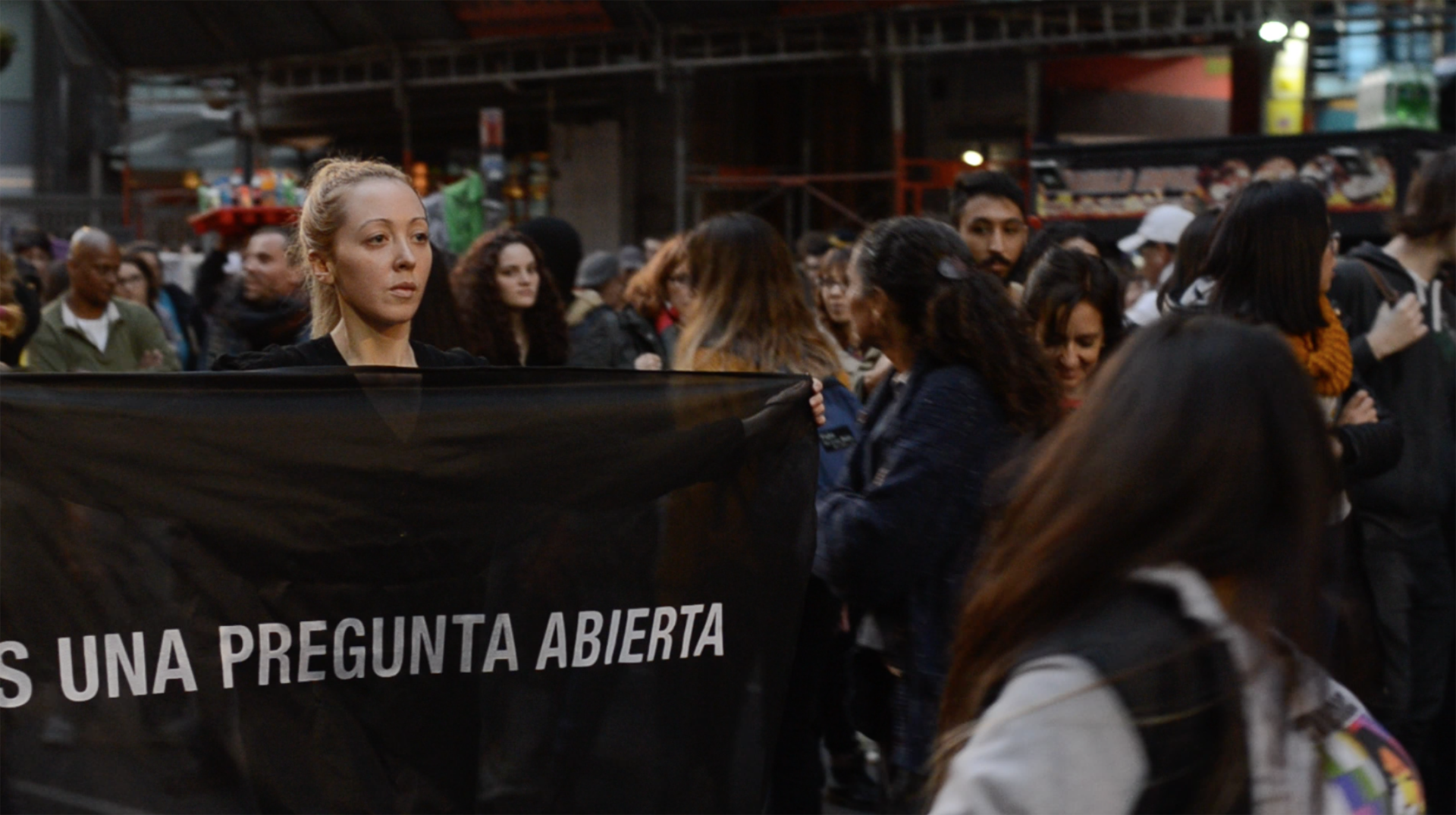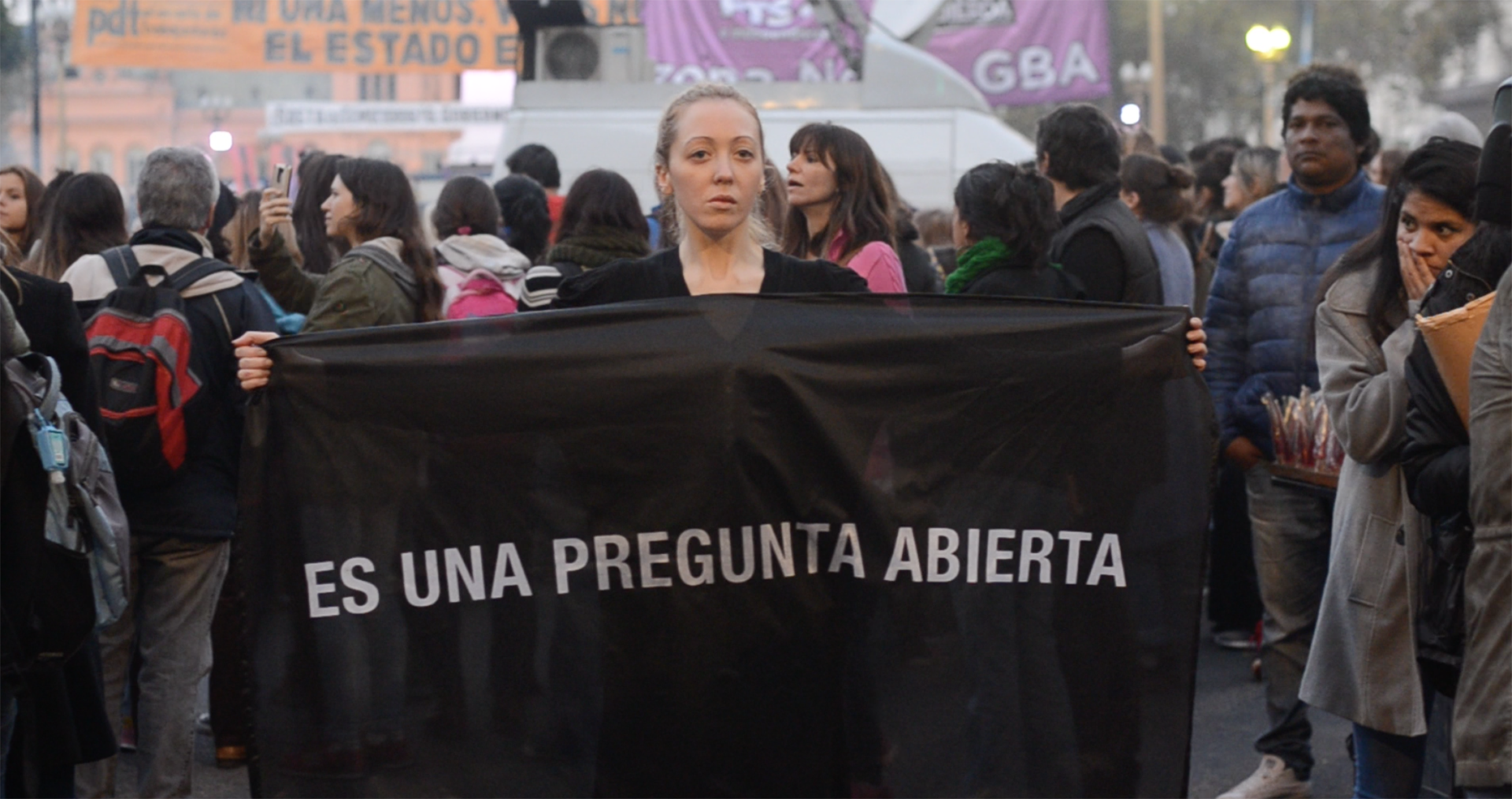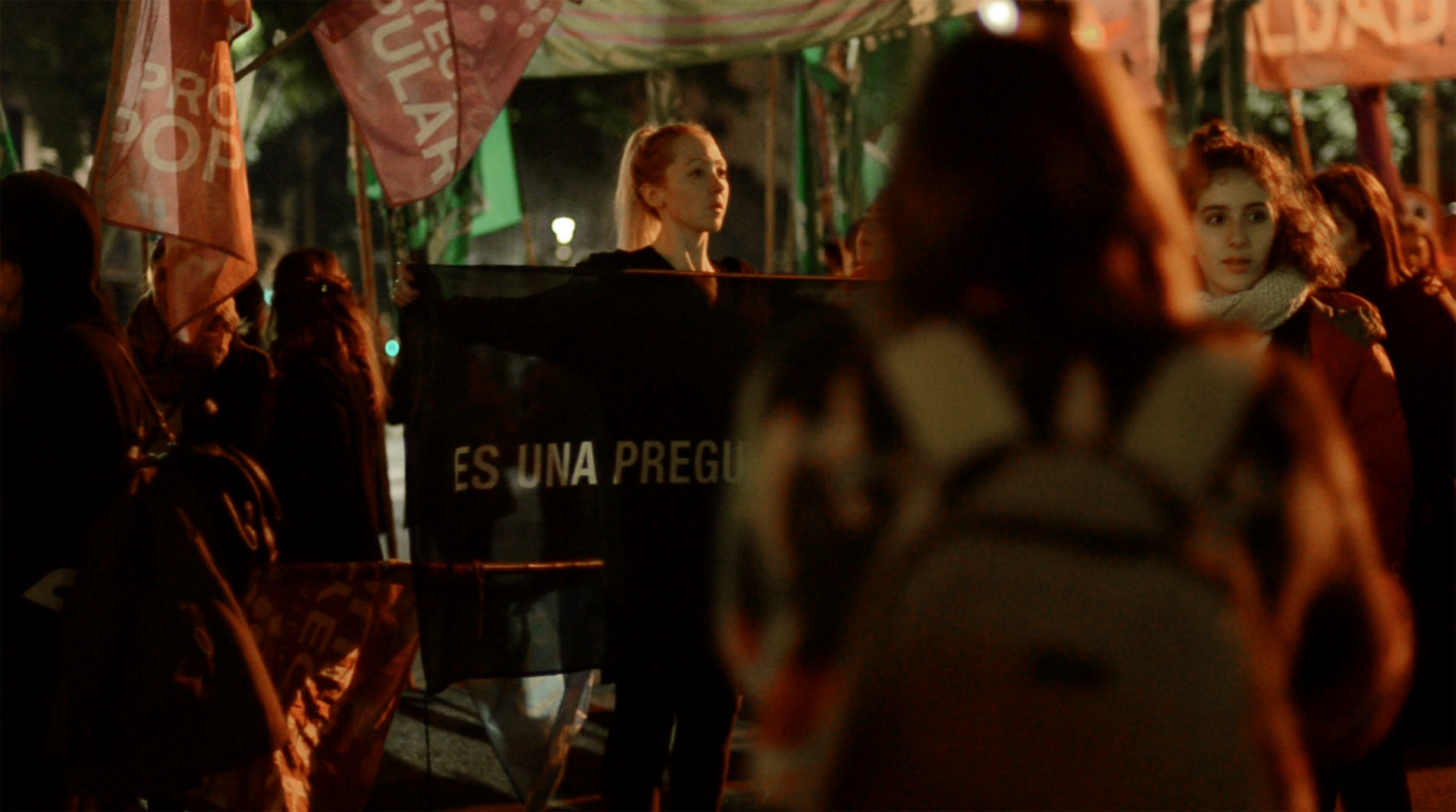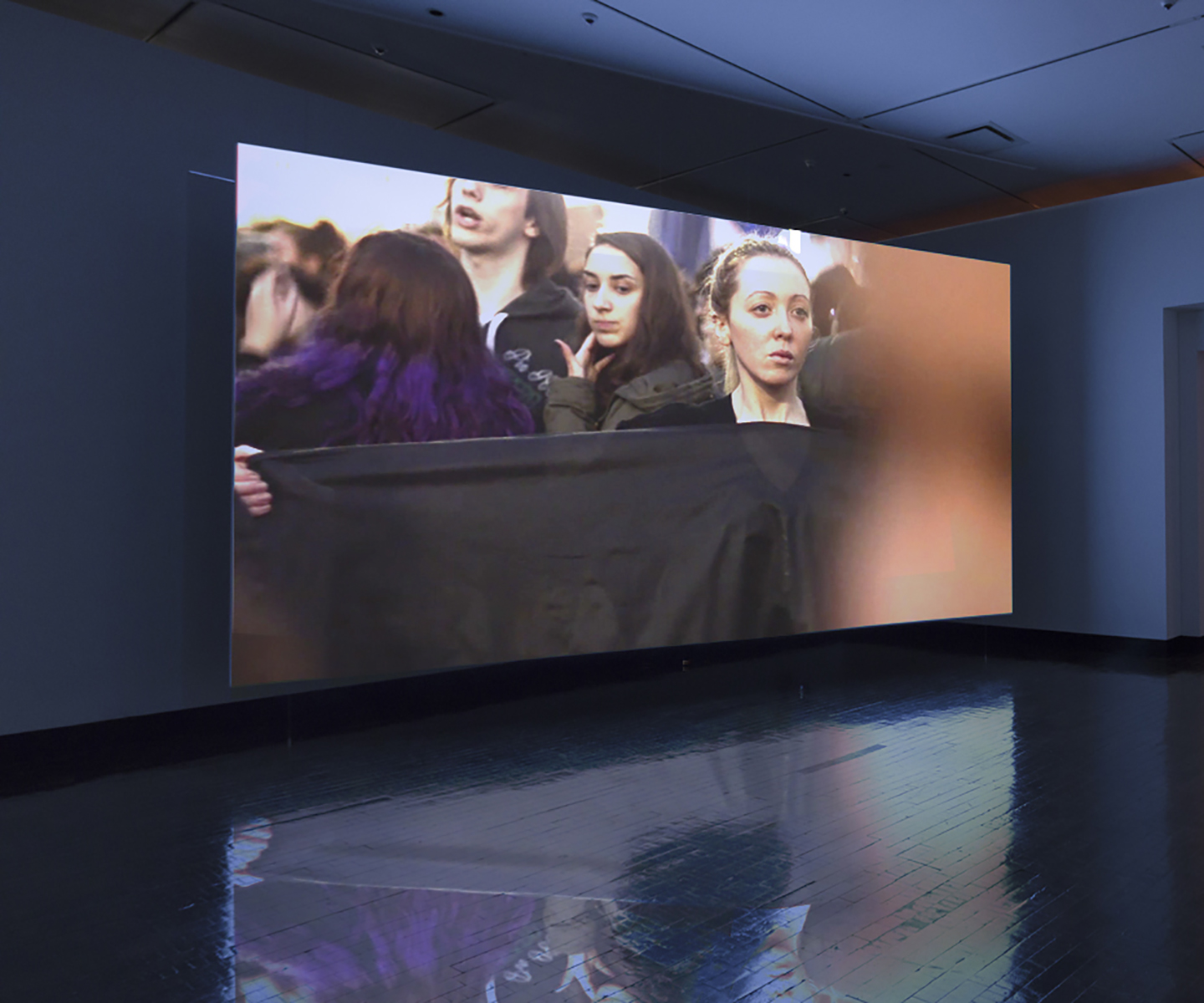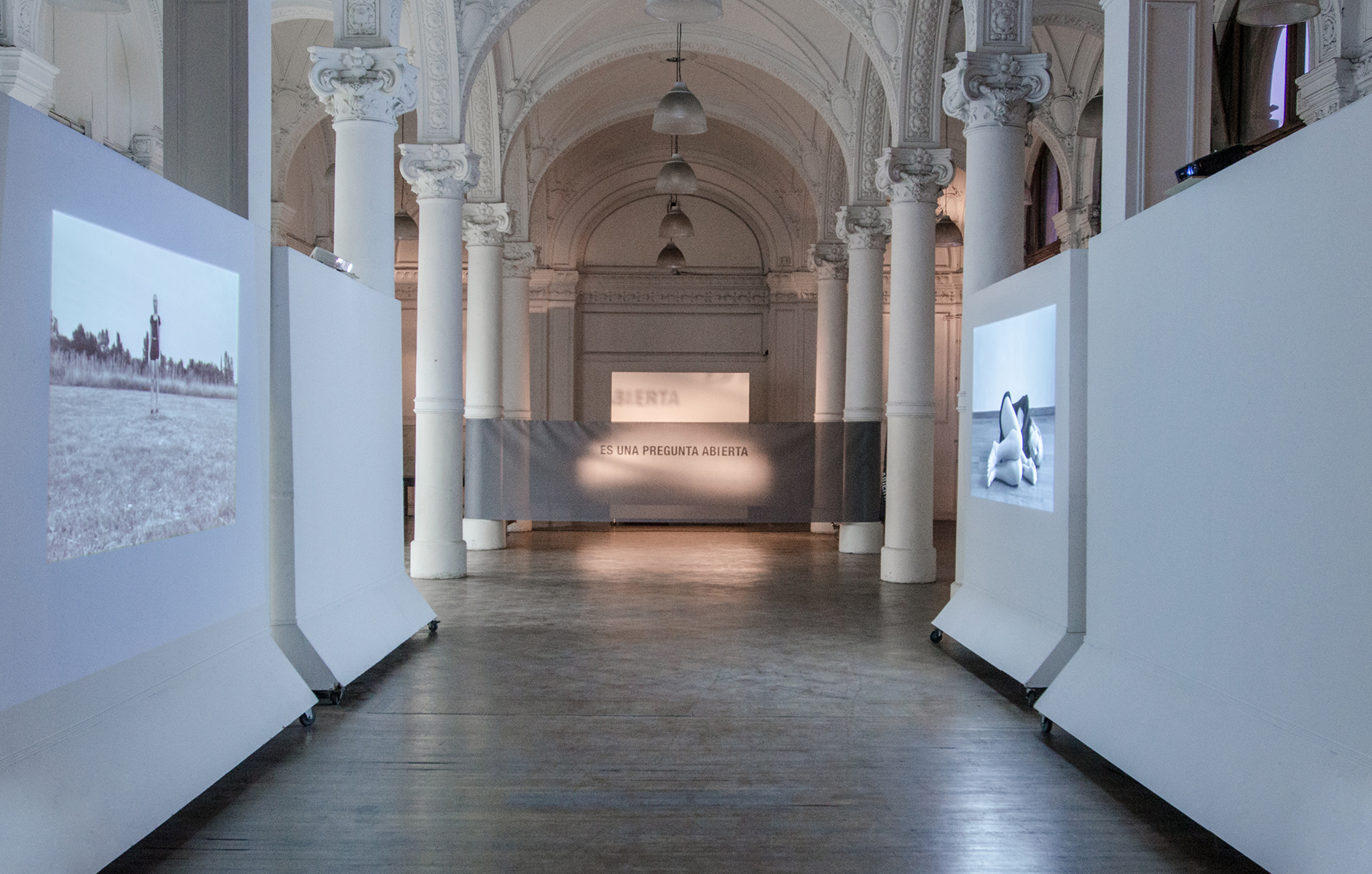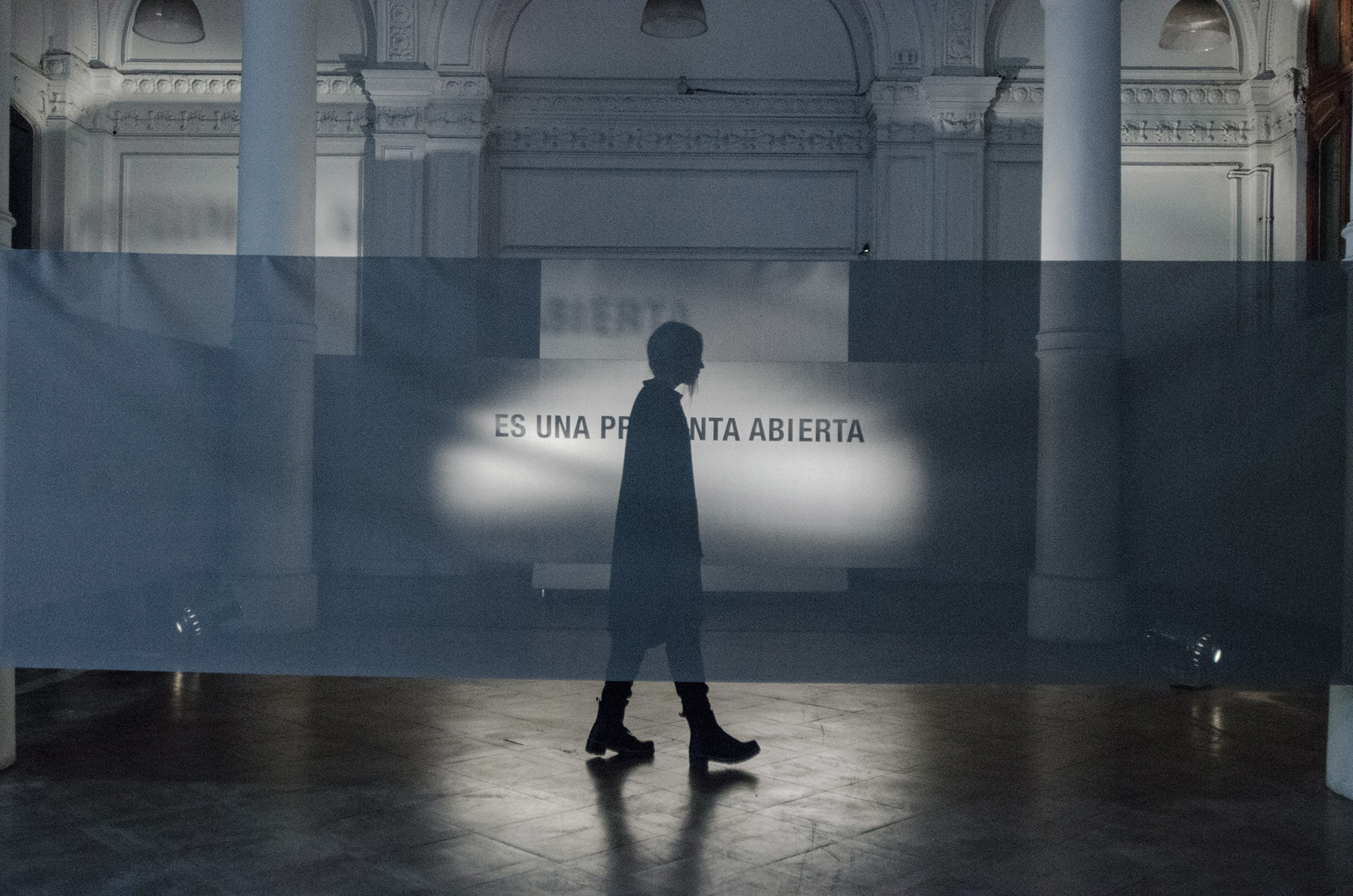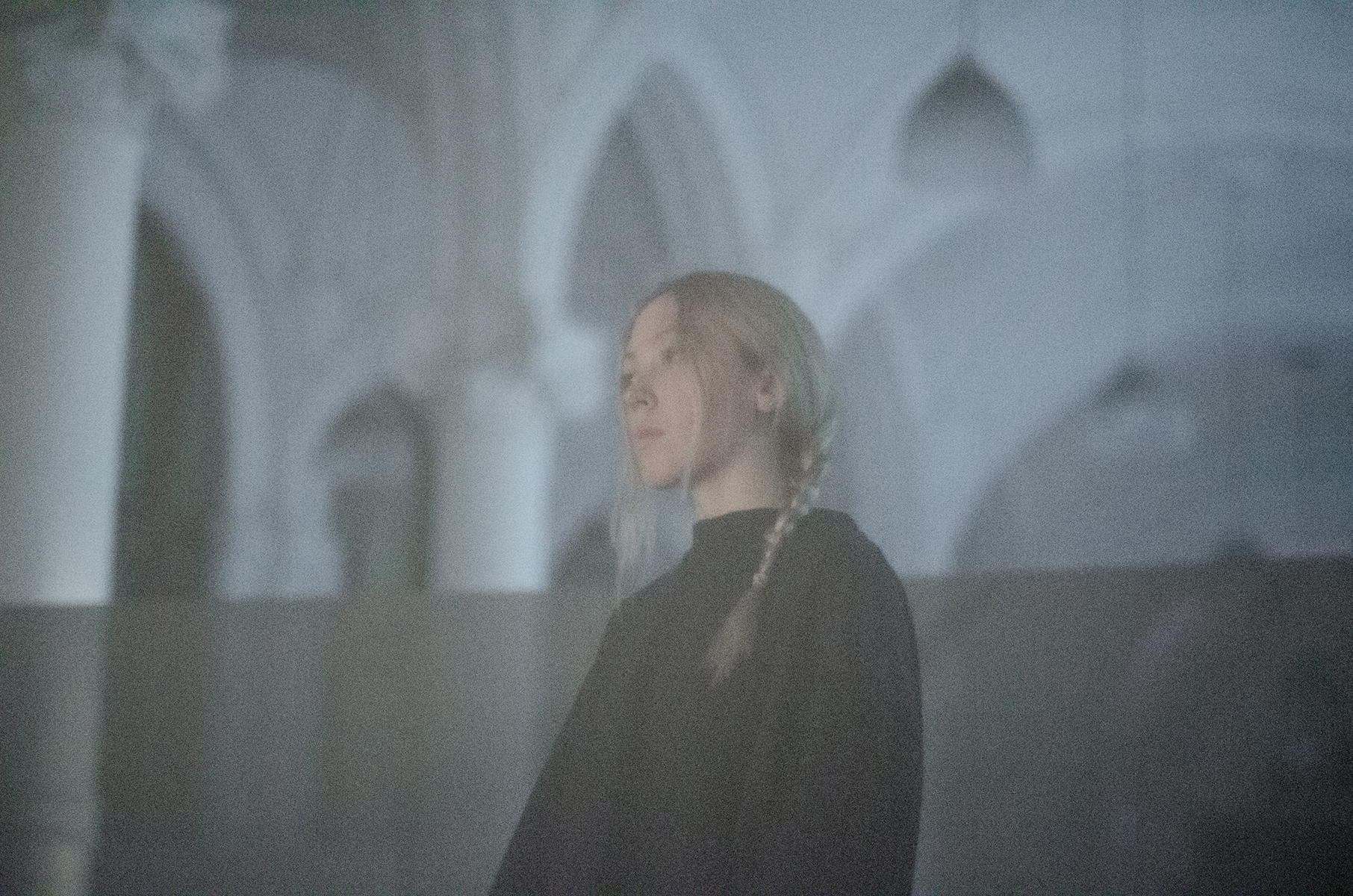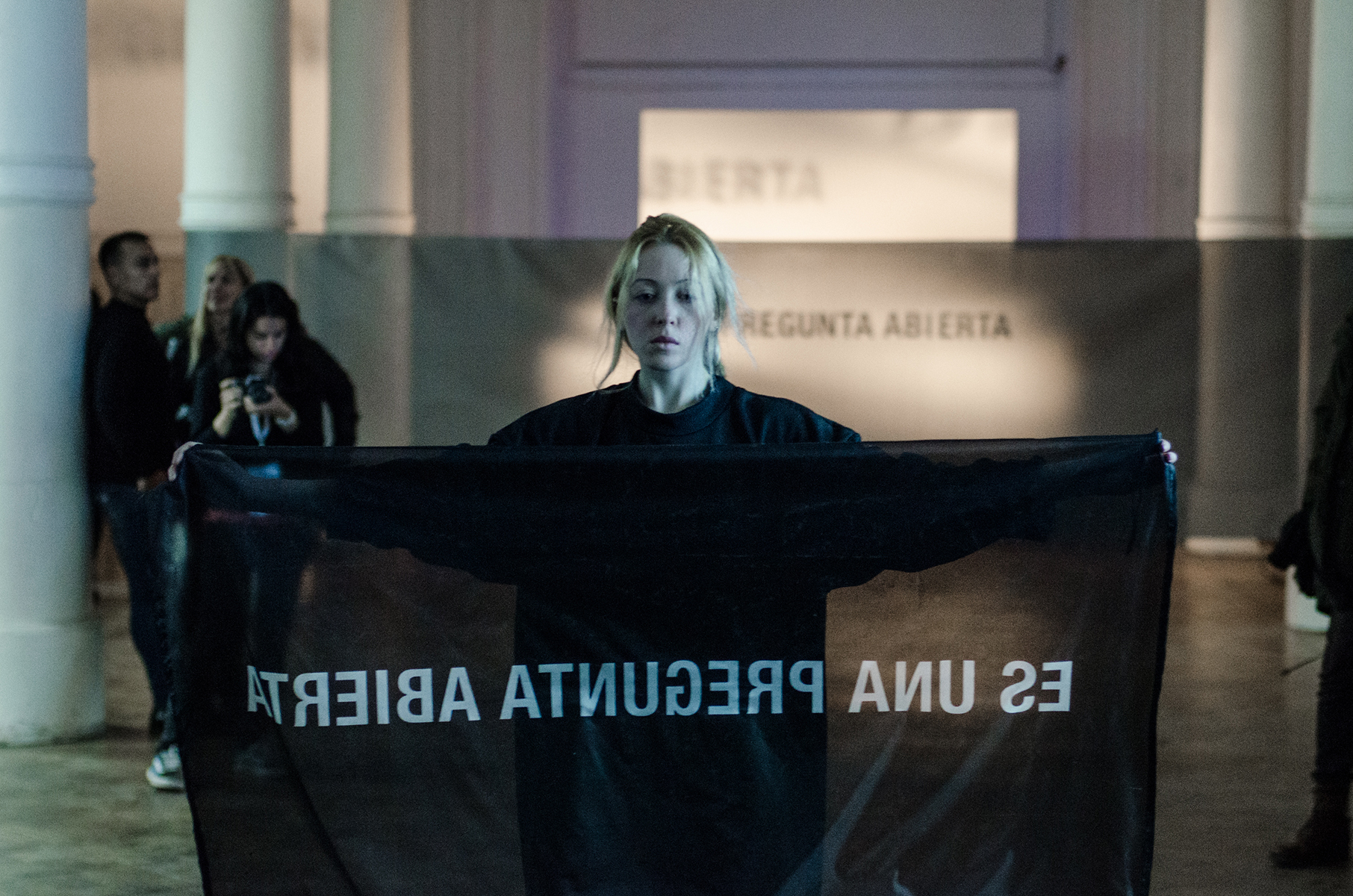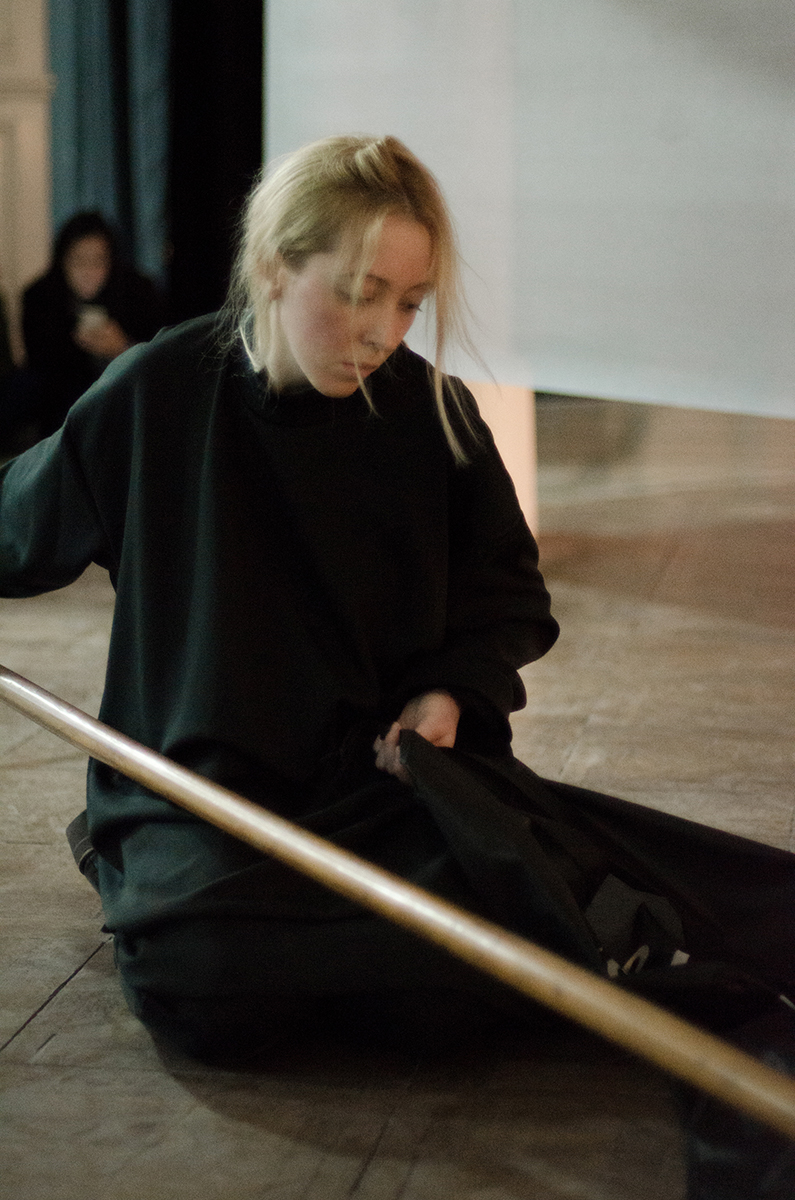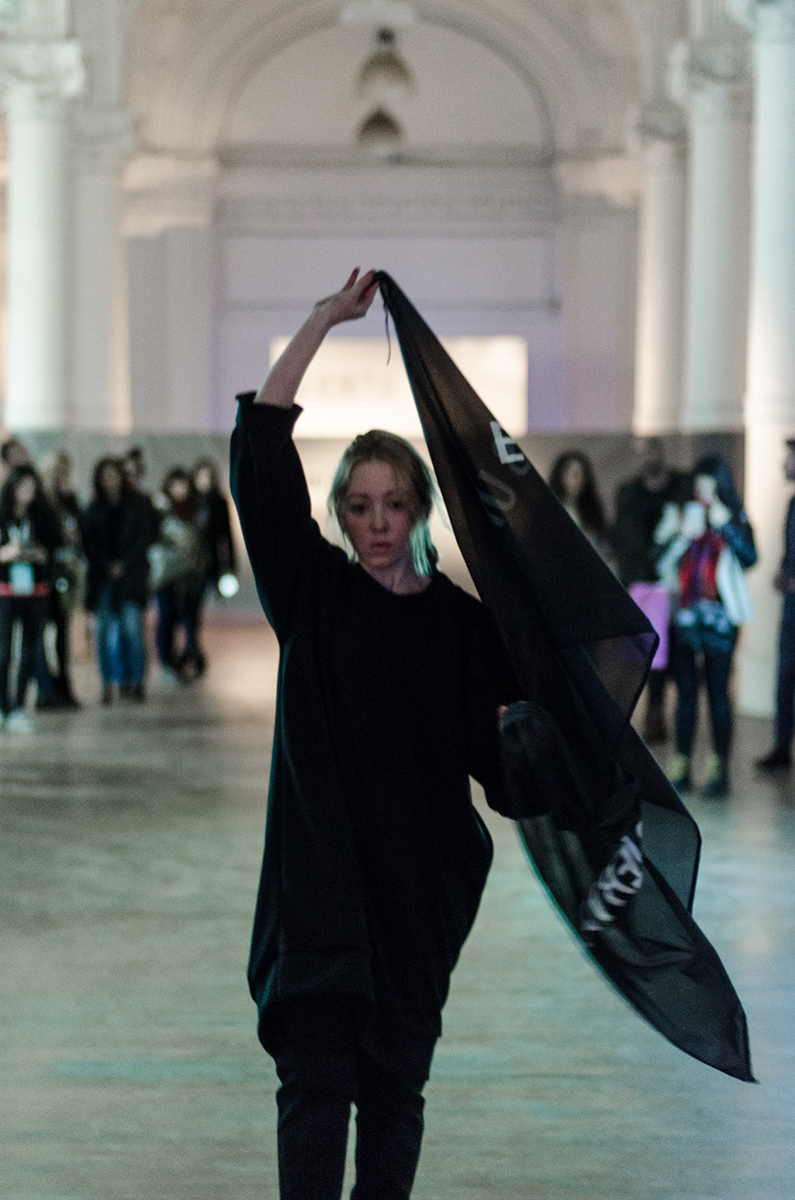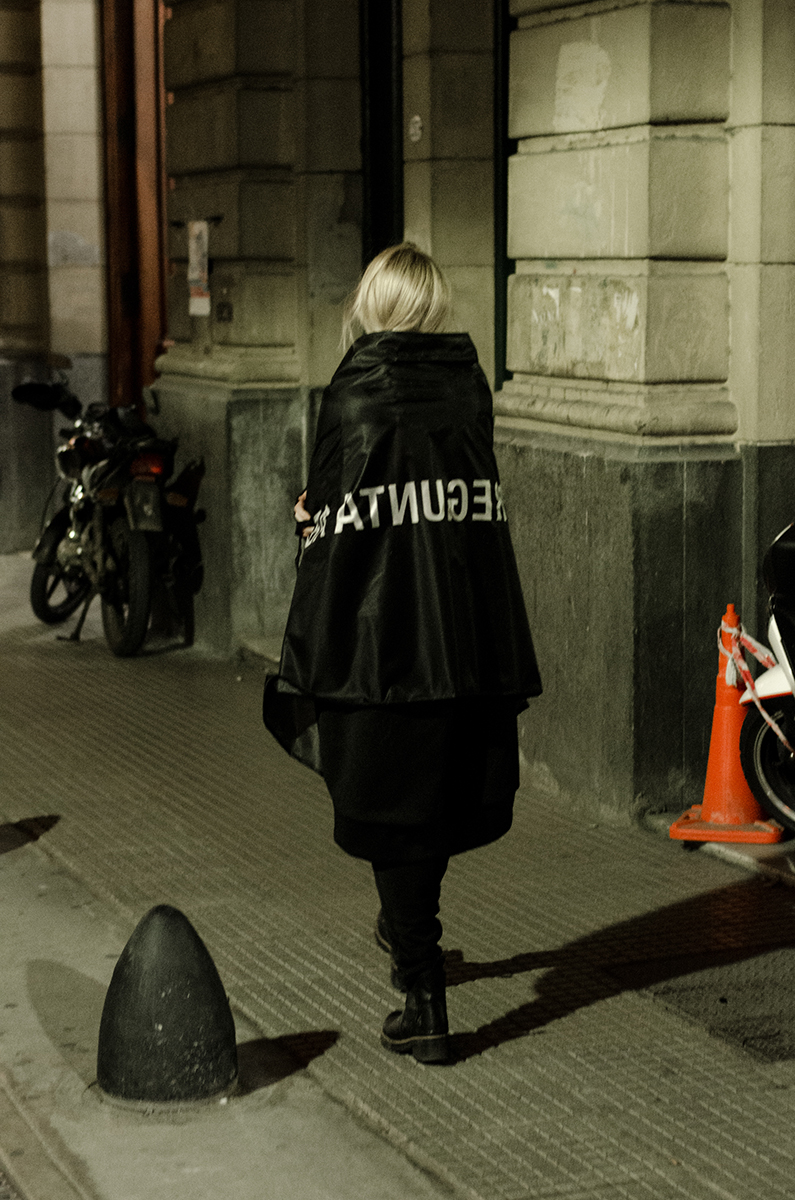Es una pregunta abierta
Performance site-specific llevada a cabo durante la marcha Ni Una Menos en Buenos Aires, Argentina.
Curaduria de Mariana Rodriguez Iglesias.
Video mono-canal, 2017.
La acción consistió en desplegar de brazo a brazo, frente al pecho emulando un escudo humano, una bandera negra con la frase ES UNA PREGUNTA ABIERTA impresa en letras blancas. Esta presencia en el espacio público, en convivencia con el resto de lxs participantes, generó distintas reacciones, tanto de empatía como de violencia, que cerraron el sentido de la acción.
La frase impresa tiene su génesis en el feminismo radical del ’69 y referencia la idea de que lo personal es político. La convivencia con la incertidumbre por la integridad del cuerpo de la mujeres pertenece a la esfera privada, pero su necesidad de construcción política es una cuestión pública. La vinculación entre esta acción individual -el impacto que produce en cada cuerpo las noticias de femicidio y los diversos abusos de género- y su manifestación colectiva -un solo cuerpo compuesto por miles, una única voz tramada de muchas- es pensada en este contexto poético a partir de su potencia simbólica, manteniendo un tono de recogimiento y permaneciendo en la pregunta planteada.
–
“Es una pregunta abierta (It’s an open question)”
Site-specific action carried out at Ni Una Menos, a women’s march that takes place annually since 2015 in Argentina and other Latin American countries.
Curaduria of Mariana Rodriguez Iglesias.
Mono-channel video, 2017.
This march stems from the initiative of journalists, artists and activists, and then spread to the rest of society, with the purpose of raising awareness on the issue of femicide in Argentina (where a woman is murdered every 30 hours) and the demand for public policies on this matter.
The action consisted in unfolding, from arm to arm in front of the chest, a black flag with the phrase ES UNA PREGUNTA ABIERTA (IT’S AN OPEN QUESTION) printed in white letters, emulating a human shield. This presence in the public space, coexisting with the rest of the demonstrators, generated different reactions, both empathy and violence, which gave meaning to the action.
The phrase printed on the flag has its origin in radical feminism from the late 1960’s and it makes reference to the phrase “the personal is political”. The relationship with the uncertainty for the integrity of women’s bodies is a private matter, but the emergency for its political construction is a public matter. The connection between this individual action (the impact produced in each body by the news of femicide and abuse) as well as its collective manifestation (a single body composed of thousands, a single voice made up by many) are thought in this context from its symbolic power with a less combative tone than the poetic and permanence in the question.
